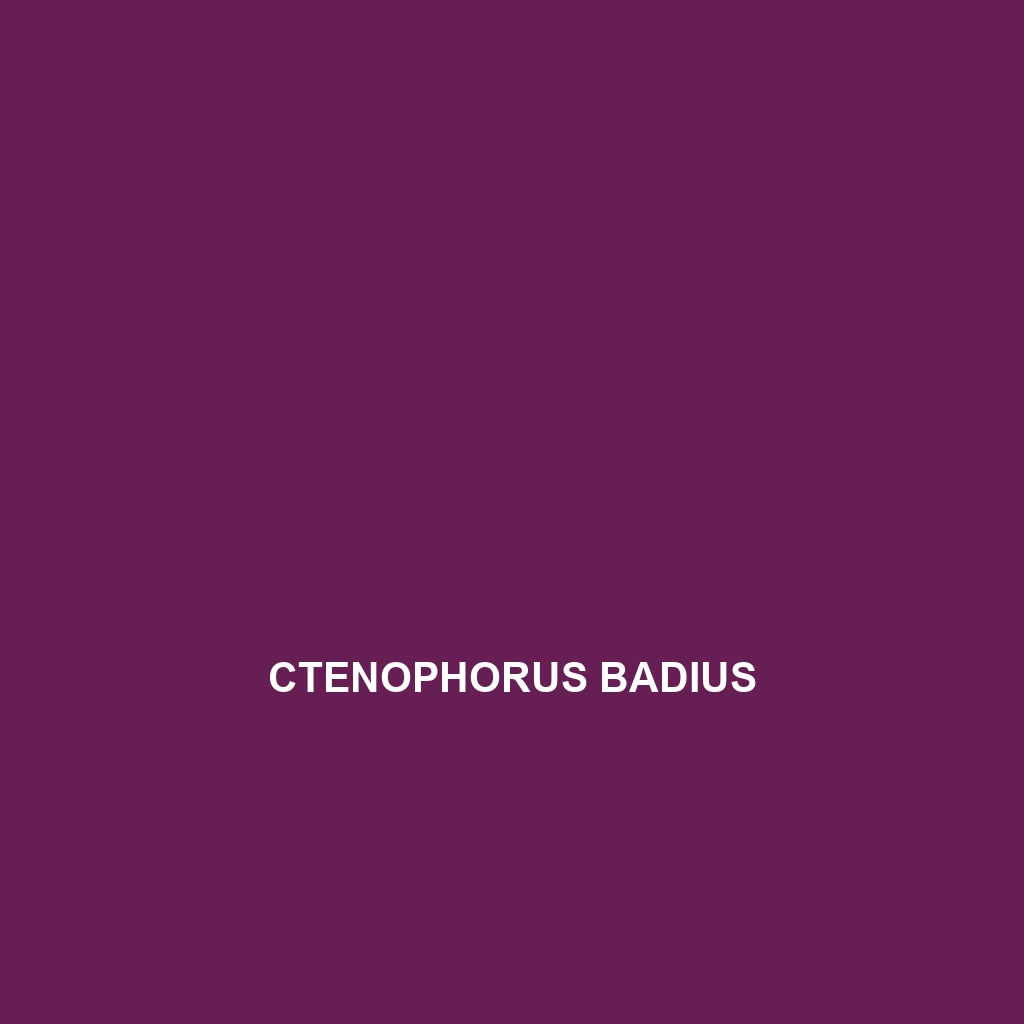Ctenophorus badius
Common Name: Ctenophorus badius
Scientific Name: Ctenophorus badius
Habitat: Ctenophorus badius, commonly known as the sandy inland dragon, is primarily found in Australia, particularly in sandy desert environments and arid regions. It thrives in habitats such as scrublands, woodlands, and grasslands, where loose sandy soils provide optimal conditions for burrowing and basking. This species is typically observed in areas with sparse vegetation, allowing them to acclimatize effectively to their natural surroundings.
Physical Characteristics: The sandy inland dragon is characterized by its relatively small size, typically measuring around 15 to 20 cm in length. This lizard showcases a striking coloration that varies from sandy brown to light ochre, which offers effective camouflage against its environment. Distinctive features include a flattened body, elongated snout, and robust limbs designed for an agile lifestyle. Males are often more vibrantly colored than females, especially during the breeding season, showcasing bright orange or yellow underparts.
Behavior: Ctenophorus badius is diurnal and exhibits a variety of behaviors that intrigue reptile enthusiasts and researchers alike. These lizards are known for their territorial displays, especially during the mating season, where males assert dominance through push-ups and head bobbing. They are also adept climbers and can often be seen basking on rocks or branches during the day to regulate their body temperature. Their quick reflexes enable them to escape predators efficiently, making them fascinating subjects for study in behavioral ecology.
Diet: The diet of Ctenophorus badius primarily consists of insects and other small invertebrates, making them insectivorous. They predominantly feed on ants, beetles, and grasshoppers, utilizing their keen vision and quick movements to capture prey. These lizards contribute to the ecological balance by controlling insect populations, highlighting their role as beneficial predators in their habitat.
Reproduction: During the breeding season, which typically occurs in spring, Ctenophorus badius engages in courtship displays that include visual signals and physical posturing. Females lay clutches of 4 to 10 eggs in shallow burrows or soft ground, where they incubate until hatching. The hatchlings are independent from birth and possess the same striking coloration as adults, which aids in their survival against predators.
Conservation Status: Currently, Ctenophorus badius is classified as “Least Concern” by the International Union for Conservation of Nature (IUCN), indicating that it is not facing immediate threats of extinction. However, habitat destruction and climate change pose potential risks to their populations, making ongoing monitoring essential.
Interesting Facts: One unique trait of Ctenophorus badius is its remarkable ability to change its behavior based on environmental conditions. These lizards can alter their basking patterns based on temperature variations to optimize their metabolic processes. Additionally, they exhibit a form of social behavior known as “flee and return,” where they quickly retreat from danger only to return to their previous spot once the threat has passed.
Role in Ecosystem: Ctenophorus badius plays a vital role in its ecosystem as both a predator and prey. By controlling insect populations, these lizards help maintain ecological balance. Furthermore, they serve as food for larger predators, contributing to the food web dynamics. Their burrowing habits also aid in soil aeration and contribute to the biodiversity of their habitat.
